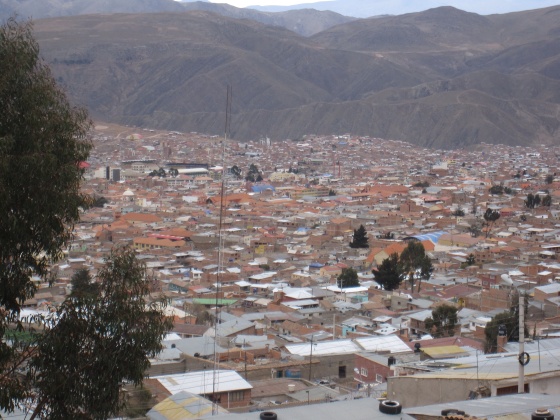After our salt flat tour, we took an overnight bus to La Paz, Bolivia, arriving early in the morning. Due to that day being a national holiday we didn’t know about, we quickly hopped on a bus heading to Copacabana before all modes of transportation shut down for the day. Little did we know, that decision would later having us crying for our lives.
It started out as a normal bus ride, with us feeling victorious that our long distance bus had arrived early, making it possible for us to catch a bus heading to Copacabana that same day. Copacabana is the town on Lake Titicaca and we were all looking forward to soaking in its beauty.

I dozed off since sleep on a bus is rarely fully restful, but woke to our bus driver announcing that there was a road block due to a strike/protest and asking any of his passengers if they knew another way through. One man in the front spoke up, giving directions and we were on our way again.

I drifted back to sleep, dreaming of spending a couple of peaceful days overlooking Lake Titicaca. Suddenly I was jolted awake as our bus stopped. I glanced out my window to a sheer drop-off what felt like inches away. The front window showed the tiny, pure dirt road that was serving as our alternative route. This narrow road wound around tight mountain curves and was clearly not meant for a huge bus.

The four of us looked at each other nervously but tried to remind ourselves that this was surely normal and we just weren’t used to these tight conditions, especially with no guard rails. That didn’t last long, however, as soon as the local folks who were riding the bus with us started to scream out to the driver to “take it slow!” and “be careful!”

The fact that the locals were getting nervous meant I needed to get myself off that bus. It was clear to me it was not worth the risk of one of our tires slipping over the edge. Just then we came upon a particularly tight corner pass, including needing to cross over a washed out section that had caused a deep divot. I looked behind us and saw a long line of 4×4 vehicles and a couple of smaller buses. It appeared we were the guinea pigs in this situation, not a preferred position.
At this point the locals were standing up and asking to be let off the bus, so the bus could attempt the pass without passengers and if all went well, we could re-board. Relieved at the chance to get off the bus, we four stood up and watched as the first handful of passengers scurried off the bus to the safety of solid ground. Then the driver shut the door and started moving forward.

What? I am not one to stay quiet in many situations so I started shouting to the driver in Spanish, “We want to get off, sir! Please, let us off!” and when that wasn’t getting a response I let out a loud, “Sir, WE WANT TO LIVE!” This got some chuckles from a few local people, but only out of their shared nervousness about the situation and their equal desire to live.
I was furious but my cries weren’t being answered and the aisle was blocked with all the other people calling out to get off, to no avail. The driver inched forward and forward, and after some agonizing moments of holding our breath we had made it across the divot and around the tight bend.

The few lucky ones who had escaped got back on the bus except for one particularly feisty and smart woman dressed in her traditional Incan clothing, who continued to jog ahead of the bus, long braids swinging, until at last she felt comfortable re-boarding and joining the rest of us who were now bonded from the terrorizing experience.

A few minutes more and we reached the end of the alternative route, turned back onto a wide, hard-surfaced non-mountain road and everyone thanked their God, lucky stars, and the Pachamama for the chance to keep on living.
Then when we got to a body of water and our big bus started climbing aboard a long wooden boat with a tiny motor, we thought it odd but in comparison to what we just lived through, was quite easy to endure.

We arrived in Copacabana safe and mostly sound and spent a relaxing couple of days there, with highlights of running into a fellow Goshen College grad as well as walking around the beautiful Isla del Sol (Island of Sun).
Next we crossed the border into Peru and its Sacred Valley. We all loved our time in the small, quaint town of Ollantaytambo with its delicious restaurants and cute cafes and narrow traditional little streets.
From Olly, as we liked to call it for ease of pronunciation, we would set off by train for our chance to finally see the big kahuna: Machu Picchu.



































































































































































































